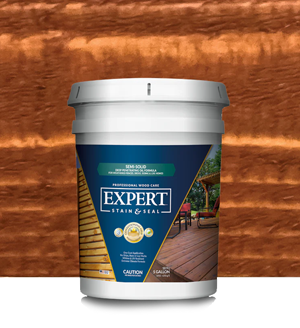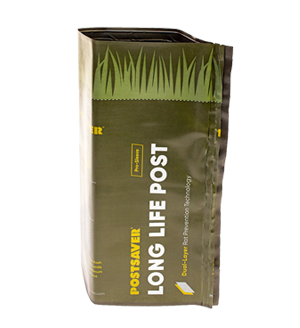Wind Fences: Everything You Need to Know

High wind speeds can cause considerable damage to structures, landscaping, and even infrastructure in rural, residential, or industrial environments.
These forces can weaken fences' structural integrity, causing fence damage and disrupting daily activities.
Fortunately, wind protection measures are available to address these challenges. One such solution is an effective barrier system designed specifically to reduce wind resistance and protect valuable assets.
In this article, we will explore how wind fences can provide long-term protection against the damaging effects of strong winds, helping to secure your property and enhance its resilience against the elements.
What Is a Wind Fence and How Does It Work?

A wind fence is a barrier designed to reduce wind speed and turbulence, offering protection against the destructive power of strong winds.
By partially blocking and redirecting airflow, these fences help protect property, agricultural zones, industrial sites, and even solar installations from wind damage.
The primary function of a wind fence is to mitigate the impact of high winds by reducing erosion, dust, and strain on structures, improving both safety and comfort.
When considering the best fence material for a wind fence, it is essential to choose one that can withstand the pressure of strong winds while offering long-term durability.
To explore this further, check out our guide on the best fence material.
Benefits of Installing a Wind Fence
Installing a wind fence offers several benefits that improve both the environment and property protection:
-
Minimize soil erosion on open land by reducing wind speed and preventing topsoil loss.
-
Reduce dust in agricultural or construction zones, creating cleaner work environments and improving air quality.
-
Protect structures and fencing from wind pressure, prolonging the life of your property.
-
Improve comfort and safety around patios, yards, or work areas by reducing the impact of strong winds.
-
Help maintain microclimates for gardens or livestock, creating a more stable environment for plants and animals.
Pairing wind fences with post protection solutions, like Fence Armor post rot protectors or post saver sleeves, ensures additional stability and helps extend fence life by minimizing structural damage from wind stress.
Different Types of Wind Fences

There are several types of wind fences designed to reduce wind speed and protect various areas. The choice of fence type depends on the environment and specific needs. Below are the most common types of wind fences:
Permeable Wind Fences
Permeable wind fences allow some airflow to pass through, reducing wind speed while avoiding strong turbulence.
These fences are ideal for long-term use in areas with consistent wind exposure, such as residential backyards or agricultural zones.
The ability to balance airflow and protection makes them suitable for maintaining a stable environment without causing excess pressure on surrounding structures or vegetation.
Overall, permeable options can help protect your property and the surrounding landscape from the damaging effects.
Solid Wind Barriers
Solid wind barriers block more wind, offering greater protection in short-term construction or industrial scenarios.
These fences are effective for quickly reducing wind force, but can create more turbulence and increased pressure at ground level.
While solid barriers provide significant protection, they are typically less suitable for long-term use in areas with persistent high winds due to the potential for erosion or ground-level damage.
However, they are a strong choice for temporary installations needing to shield properties or construction sites from the elements. For added durability, consider using wood fence tools for a more secure installation.
Temporary vs Permanent Installations
Temporary wind fences, such as mesh screens, are quick solutions that can be easily installed and removed. They are often used in short-term projects like construction sites or agricultural zones.
Permanent installations, on the other hand, made from materials like wood or metal panels, offer long-lasting protection. These are more relevant for homeowners looking to protect their fencing systems from wind damage over time.
Permanent solutions can be reinforced with products like Fence Armor accessories, which help protect against weathering and base-level damage.
For a more secure and durable installation, consider adding a chain link fence bottom guard to prevent ground-level erosion.
Ideal Applications for Wind Fencing
Wind fences can be used in various settings, offering protection in both residential and commercial environments. Below are a few examples of where they are most beneficial.
Residential Fencing and Backyard Spaces
Wind fences are ideal for protecting a home’s perimeter or patio from the harsh effects of wind. They can be easily integrated into existing fencing to reduce wind exposure and provide additional comfort in outdoor spaces.
For homeowners, incorporating wind fences into backyard designs enhances privacy and security and helps maintain a peaceful environment.
Fence Armor’s post guards can further enhance aesthetics while defending against wind-driven wear, ensuring both beauty and durability in your outdoor space.
Agricultural and Livestock Protection
In agricultural settings, wind fences are crucial for protecting crops from desiccation caused by high winds and shielding livestock from harmful wind chill.
By reducing wind exposure, these fences help maintain a more stable and productive environment for farming and livestock care.
For regions prone to wet conditions, pairing wind fences with rot barrier sleeves can offer additional protection for fence posts, preventing damage and ensuring long-term durability in areas that experience frequent wind and moisture.
Industrial and Construction Sites
On industrial and construction sites, wind fences serve multiple purposes, including dust suppression and maintaining safety around heavy equipment. These fences help reduce wind-blown dust, creating a cleaner and safer work environment.
Metal post protection, such as Fence Armor post guards, is essential in these high-traffic, wind-exposed areas to provide additional support and prevent damage to posts.
Additionally, tools like Mr. Fence Tools can help with efficient installation, ensuring that the fence is sturdy and long-lasting.
Wind Fence Design Considerations
When designing a wind fence, it is important to consider several factors to ensure it effectively reduces wind speed and protects the desired area. Below are key considerations when designing a wind fence:
Wind Load and Pressure Zones
Fence height, spacing, and permeability all play significant roles in how wind pressure is distributed. Taller fences may block more wind but could increase pressure on the ground, potentially leading to erosion or damage to nearby structures.
Spacing between fence panels also impacts how air flows through, and permeability determines how much wind is deflected versus redirected.
Fences should be placed at the right distance from the protected area to create a buffer zone, reducing wind load and protecting structures or crops from direct wind force.
Fence Post and Material Selection
When choosing materials for a wind fence, it is best to select rot-resistant, pressure-treated wood or metal posts. These materials can withstand constant wind impact and moisture exposure.
To enhance the durability of fence posts, consider using Fence Armor post sleeves or post guards for added protection against wear and tear.
By reinforcing posts with these protective products, you can extend the life of your fence and ensure its strength in high-wind conditions.
Maintenance and Longevity
Wind fences, especially wooden ones, can degrade faster due to constant stress and exposure to the elements. To prolong the life of a wind fence, it is important to regularly inspect the fence for signs of wear, such as loose panels or cracked posts.
Routine maintenance, including post protection and sealing, can help prevent early degradation.
Additionally, using fence staining equipment to treat wood surfaces will help protect against moisture and sun damage, ensuring the fence remains functional and visually appealing for years.
Why Post Protection Matters in Wind-Prone Areas
Strong winds can significantly impact the structural integrity of fence posts over time. When wind blows debris and moisture toward the base of a post, it can cause the wood to weaken and lead to ground line rot.
This is especially problematic in areas with frequent wind, rain, or freeze-thaw cycles, where the combination of moisture and temperature fluctuations accelerates post deterioration. To prevent these issues, it is essential to reinforce wind fence posts with protective solutions.
Fence Armor offers reliable post guards and rot barrier sleeves, which help extend the lifespan of posts by preventing moisture penetration and mitigating damage caused by wind stress.
These products ensure your fence remains strong and reliable, even in the harshest weather conditions, providing the necessary protection for wind-prone areas.
Final Thoughts on Wind Fences
Wind fences provide valuable protection by controlling wind speeds, safeguarding property, and reinforcing fencing systems. They are highly effective in reducing wind damage, whether in agricultural, industrial, or residential settings.
Wind fences are versatile, easily integrated into existing structures, and can enhance the aesthetics of your yard. For homeowners, adding accessories like Fence Armor post guards and rot barrier sleeves ensures that your fence stays secure and durable over time.
Keep in mind, however, that wind fences are not limited to rural or industrial use—they are practical, attractive solutions for everyday homes that want to improve comfort and protection against the elements.
Frequently Asked Questions (FAQs)
Here are some common questions about wind fences and their effectiveness:
How Effective Are Wind Fences at Reducing Wind Speed?
Wind fences can reduce wind speed by up to 50% or more in the sheltered zone, especially if they are semi-permeable and properly positioned.
The design of the fence and its placement relative to the protected area significantly affect its ability to reduce wind. Permeable fences allow some airflow through, reducing wind turbulence and lowering its speed.
How Tall Should a Wind Fence Be?
Effective wind protection typically requires fences that are 6–10 feet tall, depending on the area size and wind severity.
The proected zone generally extends up to 10–15 times the height of the fence downwind. Taller fences are more effective at reducing wind pressure and protecting larger areas.
Can I Add a Wind Fence to an Existing Fence?
Yes, you can add a wind fence to an existing structure if the posts are in good condition. Windbreak fabric or mesh can be mounted to the current fence, providing additional wind protection.
Reinforcing the posts with post sleeves, like those offered by Fence Armor, is recommended to prevent strain from the added wind load and to extend the lifespan of the existing fence.
If you are interested in protecting your fence from the wind, here are some more Fence Armor products and collections that can meet your needs:
Fence Post Puller | Stain Machine | Wood Care | Fence Post Guard | Speed Square | Mr fence Tools | Semi Transparent Stain | Wood Stripper | Fence Guard | Mr Fence Protector | Wood Fence Tools










